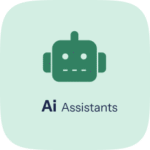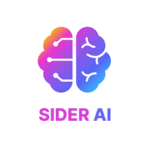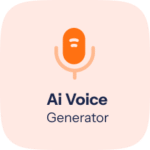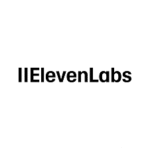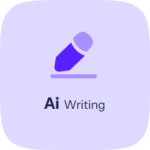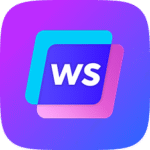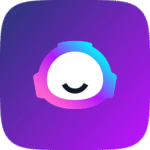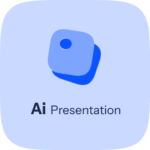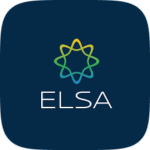Unlocking the Power of AI Agents for Automating Daily Tasks
In an increasingly fast-moving digital landscape, maximizing productivity and reducing manual effort is critical. Enter AI agents—smart assistants designed to handle repetitive tasks efficiently and intelligently. Whether it’s managing emails, automating calendar events, or processing data, these advanced tools are reshaping how we work. Powered by machine learning and natural language processing, platforms like ChatGPT, Replika, and Midjourney seamlessly integrate with everyday tools like Slack or Google Workspace. If you’re aiming to automate daily tasks—whether you’re a solo entrepreneur, remote worker, or business professional—this guide will show you how to harness AI to boost performance and regain valuable time.
What Exactly Are AI Agents and How Do They Work?
AI agents are intelligent software entities designed to perform specific actions autonomously with little to no human involvement. These virtual assistants follow predefined goals and rules, often enhanced by machine learning models such as neural networks or reinforcement algorithms. By processing user input—text, data, voice commands—they analyze context and generate actionable outcomes. Unlike traditional chatbots, modern AI agents can learn from repeated interactions, retain context, and respond adaptively, acting more like proactive digital team members than passive tools.
What Tasks Can AI Agents Handle Efficiently?
- Email Management: Prioritizing, flagging, or auto-responding to standard messages
- Calendar Automation: Scheduling meetings, sending invites, managing reschedules
- Data Handling: Populating spreadsheets, generating reports, summarizing insights
- Online Store Automation: Tracking orders, managing inventory, updating customers
- Customer Service: Resolving FAQs via chat, routing tickets, offering 24/7 support
Pro Tip: Integrate AI assistants with your daily platforms (e.g., Gmail, Trello, CRM systems) to save time and improve task consistency.
Why AI Agents Matter in Everyday Productivity
- They evolve beyond fixed scripts by learning behavioral patterns
- Suitable for all industries, from education to eCommerce
- Enable users to reclaim hours by eliminating redundant action items
Top AI Agent Tools to Jumpstart Your Automation
Ready to automate but unsure where to begin? Below are some popular AI agents that cater to various needs—from communication to content creation.
| Tool | Features | Pricing | Best For |
|---|---|---|---|
| ChatGPT by OpenAI | Conversational intelligence, coding help, writing aid, task scripting | Free / $20 Pro Plan | Content creation and task automation |
| Zapier AI | App automation, conditional workflows, task triggers | Free / Paid tiers | Business operations and marketing teams |
| You.com AI Assistant | AI-powered browsing, research, integrations | Free | Efficient content and search assistance |
Looking for affordable access? Explore budget-friendly ChatGPT plans using crypto on verified platforms.
How to Seamlessly Integrate AI Agents into Your Workflow
Implementing AI agents successfully starts with identifying pain points in your daily operations. Ask yourself where your team spends too much time—routine emails, data formatting, or scheduling—and automate from there.
Want to Get Started Fast? Here’s a Step-by-Step Plan
- Step 1: Pinpoint a repetitive task to optimize
- Step 2: Choose a purpose-fit AI agent or platform
- Step 3: Connect the agent to your daily apps (email, CRM, Slack, etc.)
- Step 4: Train with custom inputs or prompts if required
- Step 5: Review output quality regularly and refine process
Best Practices When Deploying AI Tools
- Specific task goals lead to higher success rates
- Expand capabilities through API-based integrations
- Feedback loops help improve your AI agent’s accuracy
Real-Life Use Case: Digital Agency Automates 28% of Tasks
Case Study: “Simon Web Solutions,” a marketing firm, implemented ChatGPT and Zapier to streamline newsletters, generate SEO metadata, and auto-schedule meetings. Result: 28% task automation, saving 14+ hours weekly and boosting efficiency by 20%.
What’s Next? Emerging Trends in AI Automation
- Teams of AI agents collaborating to handle parallel task flow
- More on-device processing for enhanced data privacy
- Personalized AI that learns and adapts to your daily habits
Firms like OpenAI and DeepMind continue to push boundaries in safe, scalable automation.
Key Statistics That Highlight the Impact
- By 2030, AI is expected to automate up to 70% of tasks in many roles (Source: McKinsey)
- 61% of companies saw cost reductions after implementing AI agents (Source: Gartner)
- Early AI adopters realized up to 40% ROI growth (Source: PwC)
Busting Common AI Agent Myths
| Misconception | Reality |
|---|---|
| AI agents will take away all jobs | They automate routine tasks—not creative thinking or strategy |
| Only developers can operate AI tools | No-code tools make AI accessible for everyone |
| AI is only for large corporate setups | Freelancers and small teams benefit just as much |
Top Mistakes to Avoid Using AI Agents
- Skipping customization—one-size doesn’t fit all
- Assuming full automation means zero human checks
- Overlooking security protocols and data protection
- Trying to do it all with a single AI tool
Pro Tips from Power Users
- Use custom prompts tailored to your tasks for better GPT responses
- Segment tasks among specialized tools instead of overloading one
- Audit regularly to catch early-stage errors
- Explore community-created workflows for fast deployment
Success Highlights from Real Users
Emily (Freelancer): “With ChatGPT drafting blog intros, I save 3 hours per project!”
TechNova Inc.: “AI now manages our license tracking—12 hours/week saved!”
John’s eCom Store: “Our chatbot improved customer satisfaction by 25%.”
Quick Tool Comparison
| Tool | Key Features | Cost | Standout Benefits |
|---|---|---|---|
| ChatGPT | AI conversations, script generation, multi-functional plugins | Free / $20 Pro | Exceptional for writing and dialogue-based tasks |
| Zapier | Rule-based automation with flexible integrations | Free / Paid Plans from $19 | No-code, great scalability |
| Ploonad | Discounted access to popular AI platforms | Shared, affordable pricing | Ideal for cost-conscious users |
Quick Start Checklist
- Select your core task to automate (email, reports, scheduling)
- Pick a suitable AI agent or platform
- Link it with your current tools and services
- Set up workflows or use pre-built templates
- Track results and keep optimizing
Helpful Learning Resources
- Automate the Boring Stuff with Python – Learn coding-based automation
- IFTTT – No-code automation with applets
- Zapier Learning Center – In-depth user guides and use cases
- Ploonad – Budget access to premium AI tools
FAQ (Frequently Asked Questions)
1. What is an AI agent?
An AI agent is a software program that uses artificial intelligence to complete tasks based on input data—often autonomously.
2. Can AI replace human workers entirely?
No. AI complements human capabilities by automating repetitive chores, not creative or strategic roles.
3. Which common tasks are ideal for automation?
Email management, calendar scheduling, content generation, and customer queries are great starting points.
4. Are AI tools secure?
Most reputable platforms use data encryption and follow privacy standards. Still, check each tool’s privacy policy.
5. Do I need technical knowledge to use AI assistants?
No. Many tools offer visual interfaces and templates that require no coding skills.
6. How do I connect AI tools to apps I use?
Use platforms like Zapier or IFTTT for click-based integration with services like Gmail, Asana, and Google Sheets.
7. Is AI automation expensive?
Basic versions are often free. Advanced features start from $10/month. Shared access via Ploonad beats most pricing models.
8. Can students benefit from AI automation?
Yes! Students can use AI for research, summarization, time management, and note-taking.
9. Can ChatGPT automate tasks?
Yes. With the right prompts, it can write, summarize, structure tasks, and act as a virtual assistant.
10. What’s different between a bot and an AI agent?
Bots follow static instructions; AI agents adapt, remember, and improve over time.
11. Are AI tools customizable?
Yes. Many let you create rules, give prompts, or configure workflows to fit specific tasks.
12. Can they work offline?
Most need internet access, but some on-device options exist for limited offline automation.
13. Which industries benefit the most?
Marketing, customer service, education, tech, finance, and healthcare are top adopters.
14. What is prompt engineering?
Creating precise instructions or inputs to get high-quality results from AI agents.
15. Can I use multiple agents together?
Absolutely. Tools like AgentGPT let multiple agents co-operate to handle complex workflows.
16. What are AI workflows?
Scheduled or trigger-based sequences where AI tools automatically complete tasks.
17. How do I quality-check their performance?
Start with sample runs, compare against expected outcomes, and iterate as needed.
18. Do they require training?
Basic setups work out of the box, but some benefit from task-specific training data or prompts.
19. What about data security concerns?
Stick to trusted platforms and avoid inputting sensitive information unless secure protocols are in place.
20. Where can I get ready-made workflows?
Browse libraries on Zapier, IFTTT, or GitHub for templates you can adapt and use right away.
Conclusion: Embrace Automation, Elevate Your Efficiency
AI agents are more than just tools—they’re time-saving partners that bring efficiency and innovation to your daily routine. Whether managing emails, scheduling, writing, or analytics, there’s an AI solution capable of transforming your workflow. It’s time to take the first step: choose a simple task, test a reliable platform, and witness the productivity boost. Ready to begin? Explore platforms like Ploonad for affordable, high-quality AI access and propel your efficiency to the next level!


















